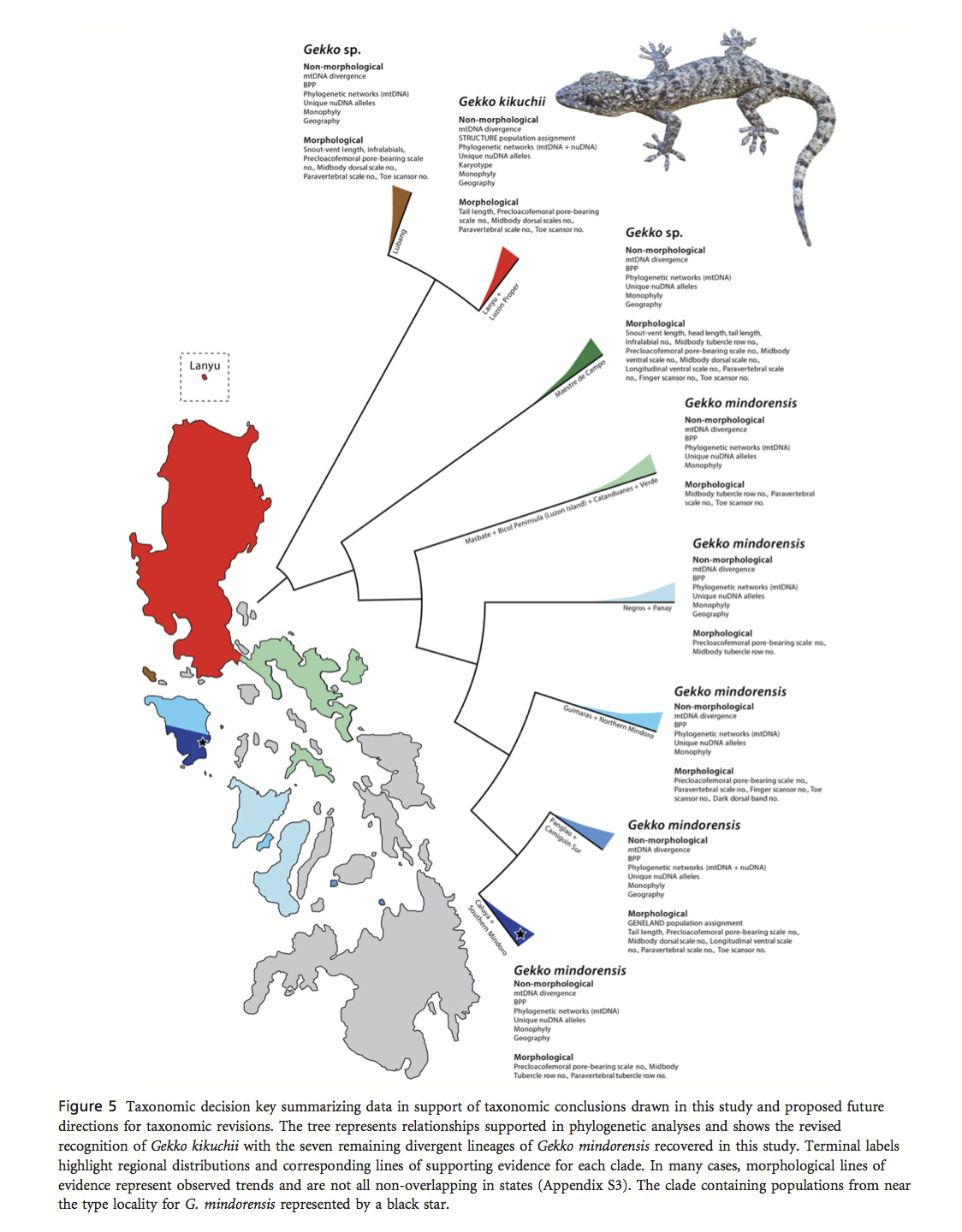Kikuchi’s Gecko: A Unique Island Endemic?

Island ecosystems often consist of many types of unique organisms and therefore are very important to conservation efforts. Deforestation, pollution, and a lack of protection of these islands cause many species to go endangered or extinct. In order to protect these endemic species it is important for scientists to study and identify the phylogenetic lineages of the many species living here. This helps show the amount of diversity in the area, while affirming that it is vital to protect these species as they are found nowhere else. Additionally, this helps determine how conservation funds should be distributed. Peripheral islands provide a special challenge, as they can have political and biogeographic ties to two different countries.
An example of this problem can be found on Lanyu Island, which is under the jurisdiction of Taiwan, but shares many species with the Asian mainland and the Philippines. The Orchid Island Gecko, Gekko kikuchii, is endemic to this island and has been considered endangered. Recently, however, this species has been found to have many similarities with another gecko species, G. mindorensis, with some people considering them as the same species. This study used phylogenetic analysis to find that G. kikuchii is nested inside the G. mindorensis clade, suggesting that it is a recent colonist of Lanyu Island. However, the methods used showed some disagreement, so further data is needed.
One of these discrepancies was between methods that used historical information when comparing the genetic variation and the methods that did not. The coalescent-based methods, or those that use historical information, supported the fact that these two are separate species, while the other methods found little uniqueness of G. kikuchii. One possibility for this is that recent integration of mitochondria from the G. mindorensis into the G. kikuchii gene pool obscured the genetic differences between them. These two species are closely related, but there is strong evidence suggesting that G. kikuchii recently diverged from G. mindorensis.
There are several different possibilities for the true classification of these geckos. There could be from two to eight total species, depending on how many species are currently considered G. mindorensis. Further studies can determine how many unique lineages there are. This will require some reworking of current phylogenetic trees, but it will resolve the discrepancies that exist now. This will help conservationists to determine how best to protect the endangered endemic species of this region.
— Matthew DeRuyter
Siler, C.D., J.R. Oaks, K. Cobb, H. Ota, R.M. Brown. 2014. Critically endangered island endemic or peripheral population of a widespread species? Conservation genetics of Kikuchi’s gecko and the global challenge of protecting peripheral oceanic island endemic vertebrates. Diversity and Distributions 20: 756–772. pdf
